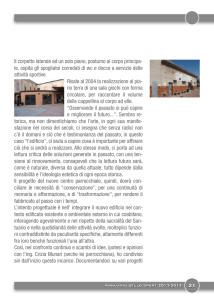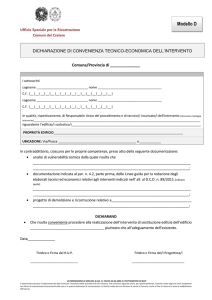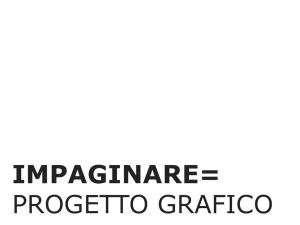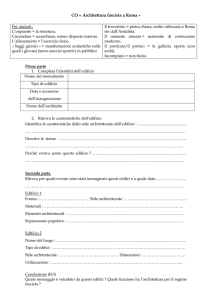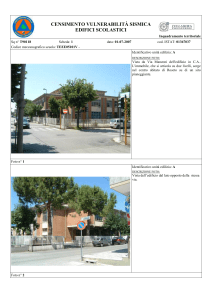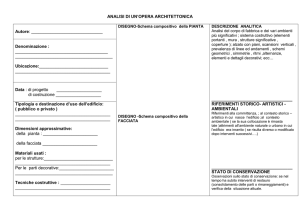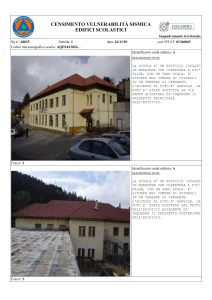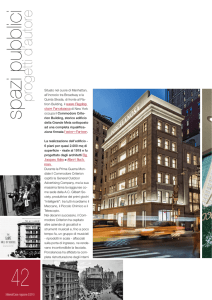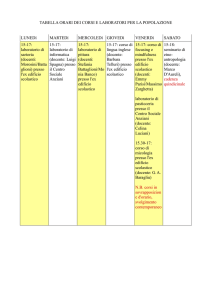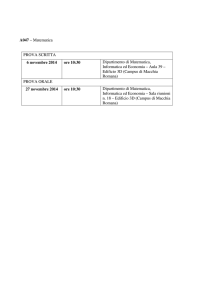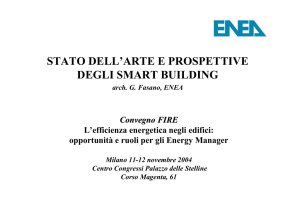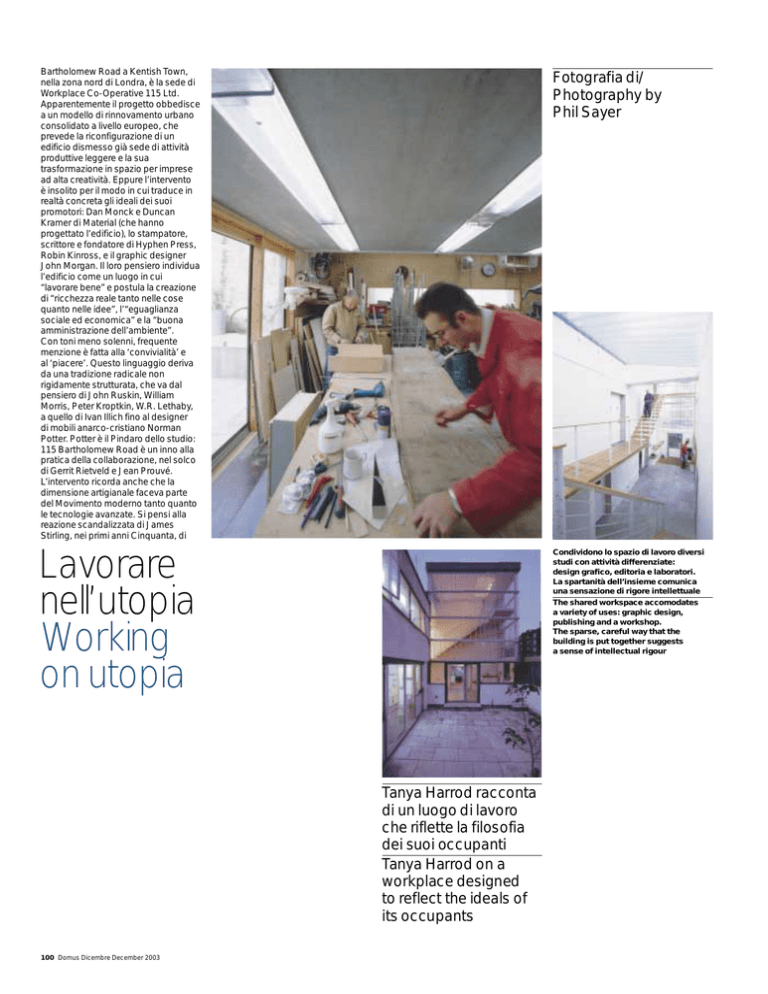
Bartholomew Road a Kentish Town,
nella zona nord di Londra, è la sede di
Workplace Co-Operative 115 Ltd.
Apparentemente il progetto obbedisce
a un modello di rinnovamento urbano
consolidato a livello europeo, che
prevede la riconfigurazione di un
edificio dismesso già sede di attività
produttive leggere e la sua
trasformazione in spazio per imprese
ad alta creatività. Eppure l’intervento
è insolito per il modo in cui traduce in
realtà concreta gli ideali dei suoi
promotori: Dan Monck e Duncan
Kramer di Material (che hanno
progettato l’edificio), lo stampatore,
scrittore e fondatore di Hyphen Press,
Robin Kinross, e il graphic designer
John Morgan. Il loro pensiero individua
l’edificio come un luogo in cui
“lavorare bene” e postula la creazione
di “ricchezza reale tanto nelle cose
quanto nelle idee”, l’“eguaglianza
sociale ed economica” e la “buona
amministrazione dell’ambiente”.
Con toni meno solenni, frequente
menzione è fatta alla ‘convivialità’ e
al ‘piacere’. Questo linguaggio deriva
da una tradizione radicale non
rigidamente strutturata, che va dal
pensiero di John Ruskin, William
Morris, Peter Kroptkin, W.R. Lethaby,
a quello di Ivan Illich fino al designer
di mobili anarco-cristiano Norman
Potter. Potter è il Pindaro dello studio:
115 Bartholomew Road è un inno alla
pratica della collaborazione, nel solco
di Gerrit Rietveld e Jean Prouvé.
L’intervento ricorda anche che la
dimensione artigianale faceva parte
del Movimento moderno tanto quanto
le tecnologie avanzate. Si pensi alla
reazione scandalizzata di James
Stirling, nei primi anni Cinquanta, di
Fotografia di/
Photography by
Phil Sayer
Lavorare
nell’utopia
Working
on utopia
Condividono lo spazio di lavoro diversi
studi con attività differenziate:
design grafico, editoria e laboratori.
La spartanità dell’insieme comunica
una sensazione di rigore intellettuale
The shared workspace accomodates
a variety of uses: graphic design,
publishing and a workshop.
The sparse, careful way that the
building is put together suggests
a sense of intellectual rigour
Tanya Harrod racconta
di un luogo di lavoro
che riflette la filosofia
dei suoi occupanti
Tanya Harrod on a
workplace designed
to reflect the ideals of
its occupants
100 Domus Dicembre December 2003
Londra
4
2
4
4
4
2
4
2
3
1
1
2
3
4
102 Domus Dicembre December 2003
4
4
ingresso/entrance
atrio/atrium
toilette/toilets
spazio di lavoro/workspace
Pianta del secondo piano/Second floor plan
studiate prendendo come base
le lastre di Reglit utilizzate nell’atrio.
Il corpo scale principale in
corrispondenza dell’ingresso e quello,
più piccolo, del laboratorio a doppia
altezza situato sul retro dell’edificio
sono in acciaio e legno e mostrano
un’esecuzione perfetta.
Sono ancora i dettagli a darci il
maggior numero di informazioni sulla
struttura dell’edificio. Tutte le pareti
interne sono realizzate con blocchi di
calcestruzzo di qualità estremamente
economica: lo scopriamo osservando
le smussature lasciate a vista, per
creare attorno alle porte una cornice
a effetto seminato. Allo stesso modo
tutte le pareti esterne di nuova
edificazione sono costituite da tavolati
di legno. La faccia inferiore dei solai
in calcestruzzo prefabbricato, che
costituiscono i piani intermedi,
è lasciata a vista al piano terreno
e al primo piano.
Duncan Kramer di Material ha
compiuto ogni sforzo possibile per
trovare esemplari di questi solai con
un buon livello estetico. Il cartongesso,
ritenuto un materiale scadente, è stato
evitato il più possibile. Il sistema
costruttivo è insolito, ma adempie alla
funzione di rendere l’edificio molto
silenzioso e stabile in rapporto agli
sbalzi termici. La tranquillità è
importante, quando c’è un laboratorio
con macchinari per il metallo e il legno
che confina con gli uffici di un editore.
Gli spazi di lavoro sono un punto
cardine per il successo di un
intervento come questo, insieme
naturalmente alla gestione no-profit
e ai bassi canoni di affitto che ne
derivano. Attualmente la costruzione
ospita quattordici creativi distribuiti tra
Pianta del primo piano /First floor plan
A questo punto, se non l’abbiamo
fatto prima, cominciamo ad
apprezzare la straordinaria sensibilità
verso i materiali e l’abilità esecutiva
dell’intervento. Non ci sono soluzioni
preconfezionate, se si esclude un
cardine molleggiato usato nelle
cabine telefoniche giapponesi.
Il capitale culturale investito nei
materiali e nelle strutture può
facilmente passare inosservato,
eppure l’edificio fa riferimento alla
cultura moderna più sofisticata.
La sua sensibilità e una sorta di chiara
parsimonia visiva, destinata a chi è
in grado di comprenderla, ricordano
il discreto understatement che
caratterizza gli edifici svizzeri più
recenti: come esemplare l’Hotel
Therme di Peter Zumthor a Vals, nei
Grigioni. Qui l’effetto generale è più
artigianale, più diretto. Monck e
Kramer non hanno potuto contare
sulla manodopera svizzera altamente
professionale né sul budget di cui
disponeva Zumthor. Anzi, l’edificio
stesso e il suo spirito cooperativo ci
rammentano che la “vera ricchezza”
risiede nelle idee.
La sensibilità di Monck e Kramer si
esprime anche nei materiali delle
pareti e delle pavimentazioni: l’atrio
è finito a intonaco bianco, gli atelier
sono rivestiti con pannelli di
compensato fissati a secco. Le
pavimentazioni sono in cemento
levigato blu-grigio, gli impianti sono
celati da una fascia perimetrale di
compensato rivestito di laminato
fenolico. Particolare cura e attenzione
sono state dedicate agli interruttori
elettrici e ai pannelli degli interfoni: le
tonalità dell’illuminazione fluorescente
del soffitto sono state accuratamente
Pianta del piano terra/Ground floor plan
fronte al carattere low-tech della
Maison Jaoul di Le Corbusier, che
stava sorgendo con l’ausilio di “scale,
chiodi e martelli”.
L’espressione “Movimento moderno”
deve essere in questo senso rivista.
Un gran numero di architetture
minimaliste tributa un’adesione
puramente formale all’architettura
moderna dei tempi eroici, ma 115
Bartholomew Road ha un approccio
diverso. A un primo sguardo, per chi
proviene dalle signorili abitazioni a
schiera di Leighton Road, l’intervento,
che sorge sui sedimenti di un paio di
edifici parzialmente demoliti, si
annuncia come un coraggioso
esercizio di “problem solving”. Il fronte
verso la strada ha una composizione
classica, con il piano terreno in
mattoni a vista, uno schermo alto tre
piani in vetro e acciaio che lascia
intravvedere una piccola corte e un
massiccio portone d’acciaio. Il primo e
il secondo livello danno la sensazione
di un “piano nobile” moderno, con
fenêtres en longueur e file d’angolo di
pannelli isolati, verniciati di bianco.
Dalla strada si entra nel fantasma del
vicolo, che un tempo separava gli
edifici preesistenti, e che ora è un atrio
vetrato in acciaio e Reglit, alto tre
piani. Visto dall’esterno, questo
impiego generoso del vetro appare
come un segno di trasparenza
moderna, in senso sia letterale sia
metaforico. All’interno l’impressione è
piuttosto quella di trovarsi nel coro di
un’abbazia normanna, pervaso da una
luce brillante e con gli spazi di lavoro
raggruppati lungo il perimetro.
L’atrio rappresenta il cuore pubblico
dell’edificio, destinato a incontri,
colloqui ed esposizioni collettive.
Working on utopia Bartholomew
Road in Kentish Town, North London,
is the home of the Workplace CoOperative 115 Ltd. As a project it falls
into a recognizable European pattern
of urban renewal in which a derelict
light industrial building is reconfigured
as a creative space. But it is unusual
because of the way in which it reifies
the ideals held by its initiators, Dan
Monck and Duncan Kramer of Material
(who designed the building); the
typographer, writer and founder of the
Hyphen Press, Robin Kinross; and the
graphic designer John Morgan. Their
thinking, set out in various manifestolike statements, identifies the building
as a place for ‘good work’, the creation
of ‘real wealth in both things and
ideas’, ‘social and economic equality’
and ‘good stewardship of the
environment’. Less solemnly, frequent
mention is made of ‘conviviality’ and
‘delight’. The language derives from
a loosely connected radical tradition,
taking in John Ruskin, William Morris,
Peter Kroptkin, W. R. Lethaby, Ivan
Illich and the Christian anarchist
furniture designer Norman Potter.
Potter is the Pindar of the studio, and
115 Bartholomew Road is a hymn
to workshop practice in the tradition
of Gerrit Rietveld and Jean Prouvé.
It also reminds us that an artisanal
approach was as much a part of the
modern movement as advanced
technology. Cue to James Stirling’s
shocked response to the low-tech
nature of Le Corbusier’s Maison Jaoul
being constructed with ‘ladders,
hammers and nails’ in the early 1950s.
The phrase ‘modern movement’
needs to be brought in early. There is
plenty of bland minimalist architecture
that pays lip service to heroic earlymodern architecture. But 115
Bartholomew Road is different. At first
sight, approached from the genteel
terraces of Leighton Road, it
announces itself as a bold problemsolving exercise, standing on the
footprint of a partly demolished pair of
buildings. The facade onto the street
is divided in classical fashion with
a rusticated ground floor of London
Sette distinti ambienti di lavoro sono
stati ricavati dalla ristrutturazione di
un deposito esistente e dall’aggiunta
di un nuovo edificio
Standing on the footprint of a partly
demolished pair of buildings, new
building has created seven distinct
workspaces
Londra
Assonometria/Axonometric view
sette studi, ciascuno dei quali ha un
carattere peculiare. Per esempio al
piano terreno si trovano due differenti
spazi a doppia altezza che
contrastano con un ambiente più
vernacolare al primo piano, dal soffitto
basso e inclinato, e con
l’impressionante lunga sala del
secondo piano, che si estende
longitudinalmente per tutto l’edificio.
Sono spazi pieni di personalità, ideali
sia per la meditazione sia per
un’attività intensa, luoghi dalla luce
morbida e dall’atmosfera calda e
quieta che contrastano decisamente
con la forte luminosità interna ed
esterna dell’atrio di ingresso.
L’edificio è ben più della somma delle
sue parti. Una cucina aperta a tutti con
affaccio sulla strada permette agli
occupanti dell’edificio di ritrovarsi in
maniera informale e, anche (una volta
la settimana) formale. Le ampie
dimensioni di questo locale
sottolineano la generosità dell’intero
progetto; non si tratta dell’ennesimo
banale edificio comunale ristrutturato
per ospitare dei ‘creativi’, ma di
qualcosa di ben diverso, più vicino
nello spirito a un’università informale:
un luogo di mutua assistenza in cui si
lavorerà certamente bene.
Domus Dicembre December 2003 103
stock bricks, a triple-height glass-andsteel screen looking onto a small
courtyard and a robust steel gate.
The first and second floors convey
the sense of a modernist piano nobile
with fenêtres en longueur and angled
tiers of insulated, naturally white
rendered panels.
We enter from the street into the ghost
of the old alley that divided the original
buildings. This now a steel-and-Reglitglazed atrium three stories in height.
From the street this generous use of
glazing signals modernist
transparency, both literally and
metaphorically. Inside it functions
rather like a brightly lit Norman
chancel with the workspaces grouped
around it. This is the building’s public
space, intended for encounters, talk
and shared exhibitions. Here, if not
before, we begin to appreciate the
extraordinary sensitivity to materials
and workmanship. There are no offthe-peg solutions – unless we count
the sourcing of a sprung hinge used
in Japanese telephone boxes.
The cultural capital invested in
process and in truth to materials and
structure might easily pass unnoticed.
The building belongs, therefore,
to the elite culture of modernism.
Its sensibility, a kind of conspicuous
visual parsimony for the initiated,
is reminiscent of the discreet
understatement that characterizes
recent Swiss buildings, the most apt
being Peter Zumthor’s Hotel Therme
at Vals in the Grisons. But the general
effect is more handmade, more direct.
Monck and Kramer did not have
access to a highly skilled Swiss labour
force, nor did they have Zumthor’s
budget. Instead the building and the
spirit of the co-operative remind us
that ‘real wealth’ resides in ideas. Then
again, the construction drawings for
this building were mostly handwork,
which is why we experience the
architecture of humanism rather than
the very unpleasant sensation of being
inside a CAD rendering.
Monck and Kramer’s sensibility
expresses itself through wall and floor
materials – the hallway is finished in
natural white plaster while the
workspaces are dry-lined with
plywood panels. Floors are powerfloated blue-grey concrete with
services concealed under a surround
of phenol-faced plywood. Care and
attention have been paid to light
switches and intercom panels. The
shades for the fluorescent top lighting
have been painstaking adapted from
the Reglit glazing panels used in the
hall. The main staircase in the entrance
hall and a smaller version in the
double-height workshop at the back
of the building are exquisitely crafted
from steel and wood.
And it is detail that teaches us about
the construction of the building.
All of the internal walls are constructed
from the cheapest concrete blocks.
We discover this because they are
chamfer-cut and left exposed to
create terrazzo-like doorway
surrounds. Similarly, all of the new
external walls are timber-framed,
something we guess from observing
the framing of the fenestration. The
pre-cast concrete slabs that make
up the intermediate floors are left
exposed as ceilings on the ground and
first floors. Characteristically, Duncan
Kramer of Material went to great
lengths to find examples of beautifully
cast concrete slabs. Plasterboard,
as a kind of second-order material,
is avoided whenever possible.
The construction is unusual but serves
to make the building very quiet and
stable as regards temperature.
Quietness is important when
a workshop with metal and
woodworking machinery abuts
a publisher’s office.
The workspaces are central to the
success of a building like this – along,
of course, with the ‘not-for-profit’
management and resulting low rents.
At present the building
accommodates 14 individuals in
7 workspaces, each of which has
a character of its own.
For instance, there are two very
different double-height spaces on the
ground floor, which contrast with a
more vernacular space with a low
sloping ceiling on the first floor and
with a dramatic long room spanning
the length of the building on the
second floor. They are all full of
character – as good for musing as for
intensive activity, places of softly lit,
warm calm that contrast strikingly with
the inside/outside brightness of the
entrance hall.
The building is more than a sum of its
parts. A shared kitchen looking onto
the street brings the occupants
together informally and, once a week,
formally. Its generous size underlines
the liberality of the entire project.
This is not the typical run-of-the-mill
communal building refurbished for
‘creatives’. It is something quite
different, closer in spirit to an
informal university, a place of mutual
aid where good work will surely
be accomplished.
Committente (prima fase)/Client (stage 1):
Robin Kinross, Hyphen Press
Committente (seconda fase)/Client (stage 2):
Workplace Co-operative 115 Limited
(membri fondatori/founding members:
John Morgan, Dan Monck,
Duncan Kramer, Robin Kinross)
Progetto/Architect:
Material – Duncan Kramer, Dan Monck,
Olga Wukounig, Della Popkin
Costruzione/Construction:
Rudgard City Limited – Charles Rudgard
Strutture/Structural engineering:
Greig-Ling
Impianti/Services:
Anthony Judd Associates
Consulenza legale/Legal advice:
Wrigleys
Finanziamento/Finance:
Triodos Bank
I materiali più economici sono stati
impiegati con accortezza allo scopo di
dare all’edificio una qualità tattile, di
solito assente in progetti di questi tipo
Cheap materials have been used with
care and thought to give the building
a tactile quality normally absent from
such projects
104 Domus Dicembre December 2003
Londra

